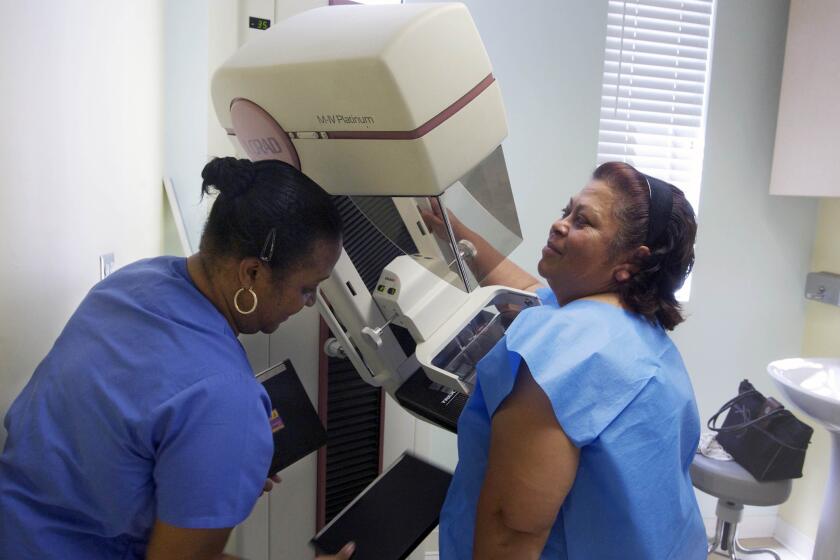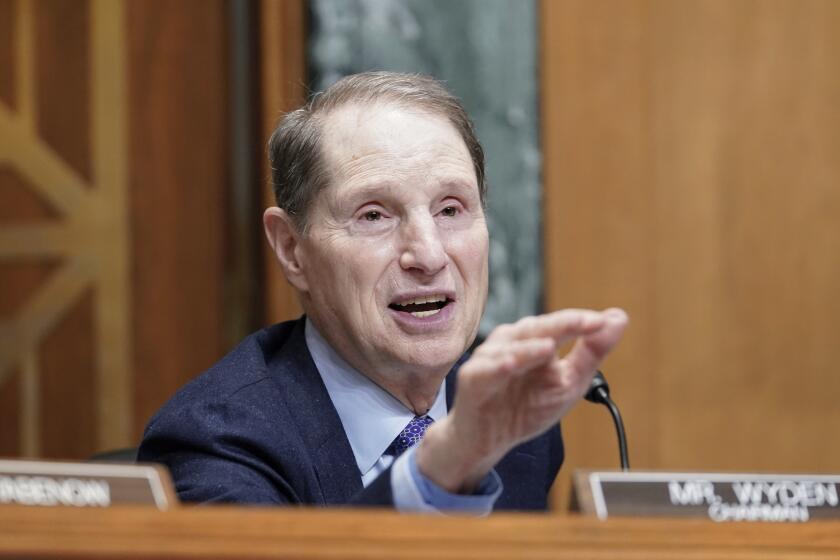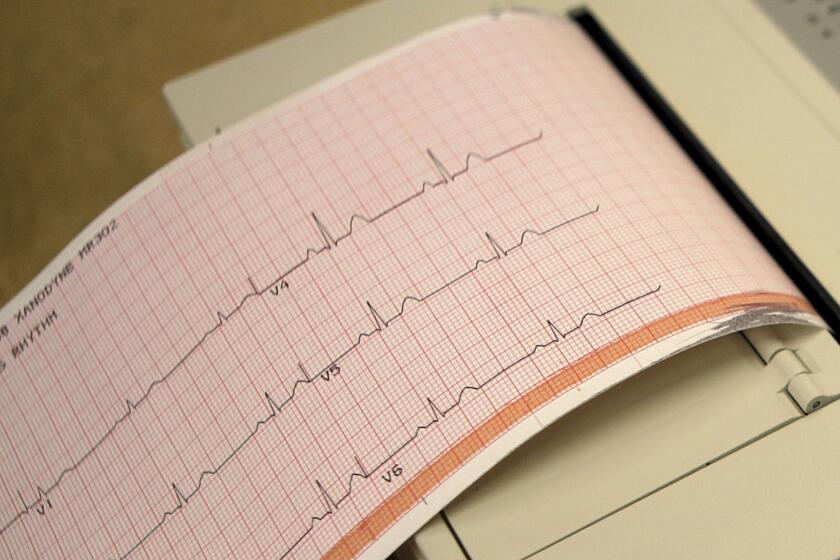How AI might help researchers make esophageal cancer less deadly
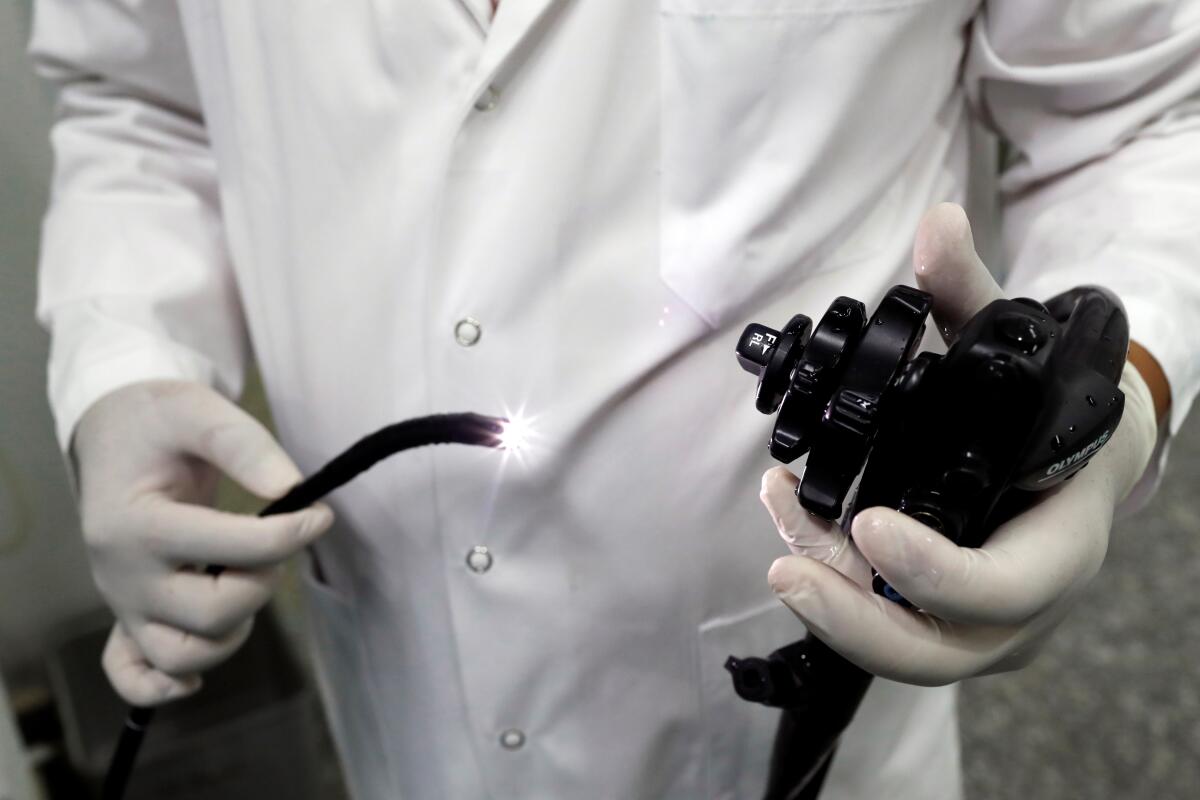
Approximately 600 times a day, the esophagus ferries whatever is in your mouth down to your stomach. It’s usually a one-way route, but sometimes acid escapes the stomach and travels back up. That can damage the cells lining the esophagus, prompting them to grow back with genetic mistakes.
About 22,370 times a year in the United States, those mistakes culminate in cancer.
Esophageal cancer can be cured if it’s discovered and treated before it burrows in deep or spreads to other organs. But that’s rarely the case.
“The way this usually goes is a patient has had reflux symptoms for many years, they’ve taken Tums or something, and then all of a sudden they have difficulty swallowing so they come to the ER,” said Dr. Allon Kahn, a gastroenterologist and associate professor of medicine at the Mayo Clinic in Arizona. That’s when doctors discover a tumor that has grown into the walls of the esophagus, and likely beyond.
“At that point,” Kahn said, “it’s incurable.”
This is why only about 20% of Americans with esophageal cancer are still alive five years after their diagnosis. To improve on that figure, doctors say they don’t necessarily need better medicines. What they need are better ways to find the cancer while it’s still in its earliest, highly treatable stages.
And to do that, they need a breakthrough in screening for the disease.
“The concept of screening is to find dangerous things before they do dangerous things,” said Dr. Daniel Boffa, chief of thoracic surgery at Yale.
New recommendations from the U.S. Preventive Services Task Force say breast cancer screening should begin at 40 and continue every other year through age 74.
It works for diseases such as breast, lung and colon cancer. In those cases, there’s a clear progression of steps that leads to cancer — and only to cancer.
But that doesn’t seem to be the case with esophageal cancer.
“We don’t really know who to screen, how often to screen, and what is the thing that we can see that will tell us, ‘This person is going to develop a dangerous cancer,’” Boffa said.
He likened the situation to the difficulty of forecasting a tornado.
“Most tornadoes happen when conditions are favorable for a tornado,” he said. “But most of the time that conditions are favorable for a tornado, there’s not a tornado. And a lot of the time, tornadoes happen outside of those conditions.”
Another complicating factor is that cases of esophageal cancer are rare, accounting for about 1% of all cancers diagnosed in the U.S.
Picture the 100,000 college football fans packed into Michigan Stadium in Ann Arbor on a game day, said Dr. Joel Rubenstein, a research scientist based 3 miles away at the Lt. Col. Charles S. Kettles VA Medical Center and a gastroenterologist at the University of Michigan. Then picture yourself having to figure out which four of those fans will develop esophageal cancer this year.
Many doctors and consumer advocates say that AI can’t live up to its hype.
Screening someone for esophageal cancer is not a trivial procedure.
The standard method involves inserting an endoscope — a flexible tube with a camera on one end — into a patient’s throat and threading it down to the stomach. The camera allows doctors to inspect the esophagus up close and check for abnormal cells that could become cancerous.
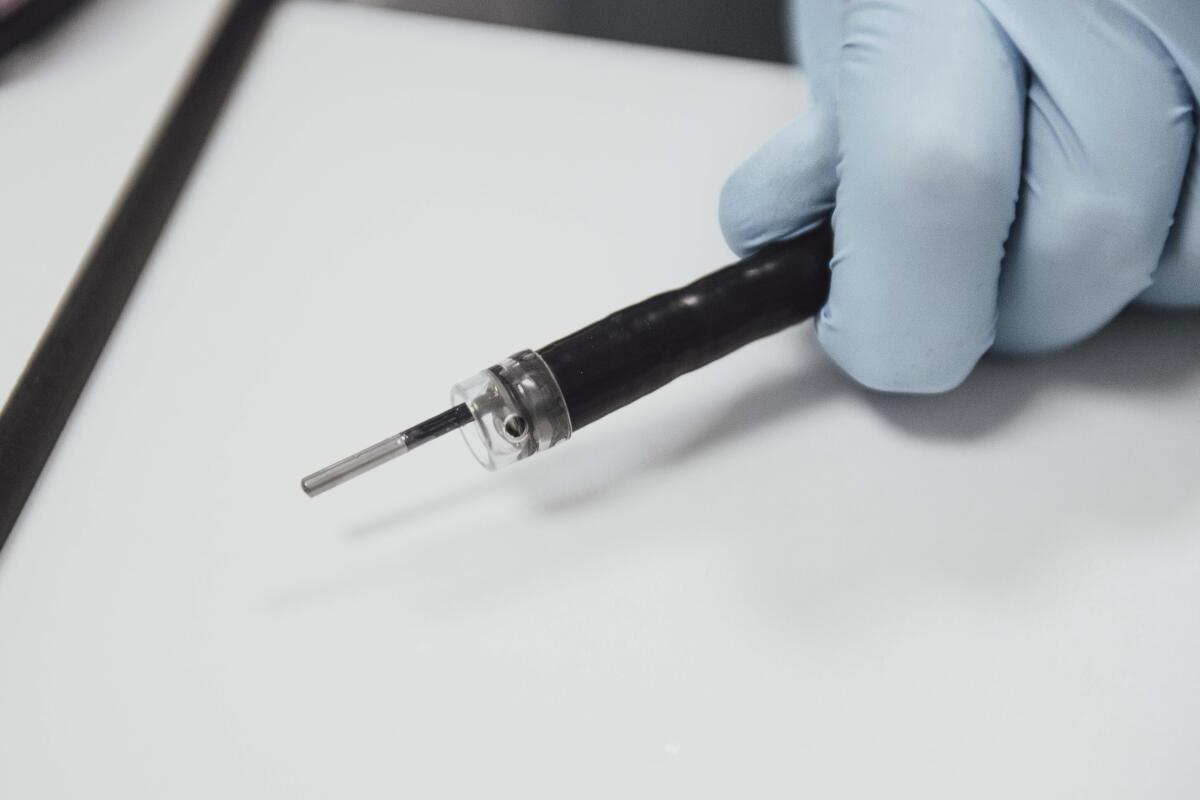
The tube also serves as a conduit for tools that can collect tissue samples, which can be sent to a pathology lab for diagnostic analysis. If a doctor sees a growth that looks like early-stage cancer, it can be removed on the spot.
It sounds straightforward, but patients must be sedated for the procedure, which means they lose a day of work. Endoscopy is also expensive, and there’s a shortage of doctors who can do it.
“We’re only catching 7% of cancers through endoscopy,” Kahn said. “We’ve got to find a way to increase that number.”
In the U.S., the most common form of the cancer begins at the base of the esophagus. The cells there aren’t built to withstand exposure to stomach acid, so in people with chronic acid reflux, they sometimes adapt by becoming more like intestinal tissue. That condition is called Barrett’s esophagus, and about 5% of U.S. adults have it.
“If that’s all that was, we’d say, ‘That’s great,’” Kahn said. “But unfortunately, when it makes that change in cell type, there are genetic changes that predispose a patient to cancer.”
Policymakers are starting to puzzle over how to regulate artificial intelligence in healthcare — and likely to mess it up, the AI industry thinks.
About 0.3% of people with Barrett’s esophagus develop esophageal cancer each year, said Dr. Sachin Wani, a gastroenterologist and professor at the University of Colorado School of Medicine. And compared with people without Barrett’s, they are roughly nine times more likely to die of esophageal cancer.
That means screening for Barrett’s is tantamount to screening for esophageal cancer.
Doctors largely agree on a core group of risk factors, including chronic gastroesophageal reflux disease, smoking and carrying extra pounds in the abdomen. Other risk factors include being at least 50 years old, male, white and having a family history of either Barrett’s or esophageal cancer.
There is less agreement about how many risk factors a person must have to justify screening.
Based on recommendations from the American College of Gastroenterology, more than 31 million people are eligible for screening. Guidelines from the American Society for Gastrointestinal Endoscopy raise that figure to 52 million, and the American Gastroenterological Assn.’s advice expands it to 120 million, said Dr. Gary Falk, a gastroenterologist and professor of medicine emeritus at the University of Pennsylvania’s Perelman School of Medicine.
All of these recommendations leave room for improvement. Only 50% to 60% of people who meet screening requirements actually have Barrett’s, said Dr. Prasad Iyer, the chair of gastroenterology at the Mayo Clinic in Arizona.
“The screening criteria are not accurate enough,” he said.
Indeed, at least 90% of people who have risk factors for Barrett’s don’t actually have the condition, Iyer said. That includes the vast majority of people with acid reflux.
So doctors are turning to artificial intelligence to identify additional characteristics that can improve their ability to identify those most likely to have Barrett’s and esophageal cancer.
“Everyone in medicine is looking at AI,” Falk said. “We think it’s going to revolutionize things.”
The future isn’t handing over the keys to computers but, rather, making use of what they can do that we can’t and adequately funding these efforts.
Iyer and his colleagues are developing an AI tool that scours the electronic medical records of Mayo Clinic patients to find those who should be screened for Barrett’s. The tool considers more than 7,500 distinct data points, including past medical procedures, lab test results, prescriptions and more. (Among the surprises: A patient’s triglycerides and electrolytes had predictive value.)
“This is probably something a human would not be able to do efficiently,” Iyer said.
In tests, the overall accuracy of both tools was 84%. While those are substantial improvements, the team would like to bump that up to 90% before they are rolled out in the clinic, Iyer said.
Rubenstein and his colleagues created something similar, using machine learning techniques to analyze the health records of VA patients across the country. Their tool also performed better than the official guidelines of medical societies, with an accuracy of 77%. Now the team is working to refine its threshold for screening by adding cost-effectiveness to the mix.
Once in use, tools like these could lighten the load of overburdened primary care doctors, who aren’t necessarily up to date on the latest screening guidelines and refer fewer than half of their eligible patients for testing.
“It will flag a patient and say, ‘This patient should be screened,’ or, ‘This patient should not be screened,’” Iyer said. “That’s what the future really needs.”
